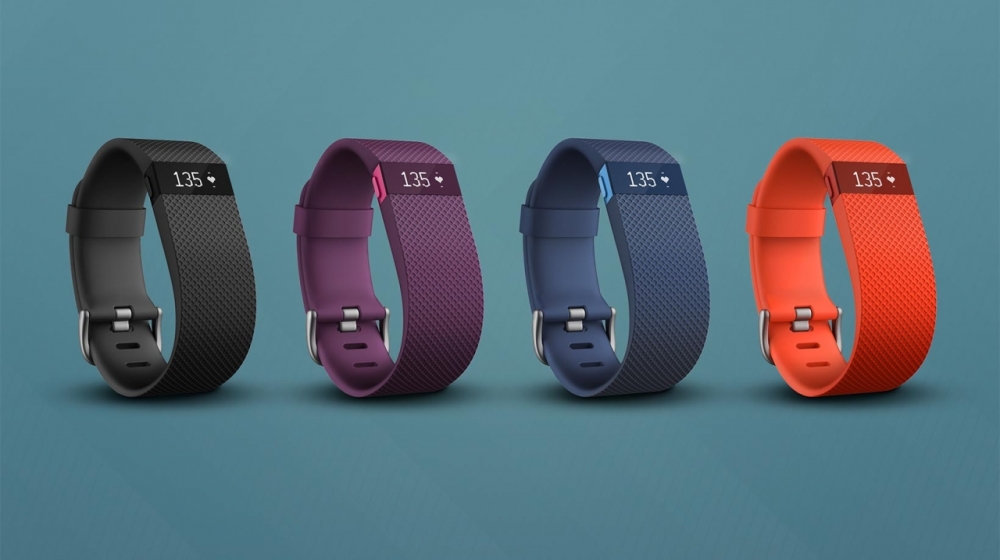Introduction
Since last year, I’ve been paying more attention to my fitness and overall well-being. I started running and lifting weights in order to start losing weight. I’ve employed several strategies in order to get where I currently am. These include intermittent fasting, dieting, calorie tracking and of course, working out. I’ve been very interested in purchasing a fitness tracker to aid me in my goals and tracking. I also have an interest in wearable technology especially now that it’s advancing from its beginning stages. For this weeks case study, I’ll be talking about the FitBit Charge HR
About

The Fitbit Charge HR is one of the products from Fitbit’s latest product lineup. It features a small OLED screen which displays information like steps walked, heart rate, and various phone notifications. It looks similar to the Fitbit Charge, but the only difference between the two models is that the fitbit Charge HR features the heart rate monitor (hence the “HR” in the name). The Charge HR can connect to smartphones using bluetooth or a computer using a wireless sync dongle. This product is targeted more towards the active consumer who is more serious about tracking and monitoring their fitness.
Compared to other models
The Charge HR is advertised as the first model within the Active category–Just a step above the Everyday category.It’s the third highest product in Fitbit’s current product lineup. The lower tier fitness trackers are more for the casual user who wants to keep track of their activity. Like mentioned before, the Charge HR differs from the regular Charge due to it’s heart rate monitoring feature. The sacrificed features consist mainly of the lack of information displayed like time and caller ID. Compared to the high tier models, the Charge HR doesn’t have features like music control, text notifications and GPS tracking. I would describe this particular model to be meant for the user who is more active than the casual user but will want to wear the product and not worry about it because they won’t be constantly looking at their device.
Hardware
The band is made out a rubber-like material which is specified as durable and flexible. It is also sweat, rain, and splash proof however, it isn’t swim or showerproof. These features are very important for the user especially because the product is meant to be used constantly and is meant for fitness. The material must be comfortable for the user to be able to use all day and the water resistance is vital for intense workouts. Resilience to the elements is a big plus for the Charge HR. With all of this said, I didn’t see any mention of shock resistance. This made me question it’s strength in everyday situations because it’s more than likely that the product will be put under extreme conditions both in workouts and everyday use.
The Charge HR also has a vibration motor which can be used for alarms and notifications. This is a standard for most wearable (wrist) technology. This feature can be very useful for the user because can be instantly notified of something from their smartphone. The vibration alarm is also very helpful for the users that want to track their sleeping activity by keeping their Charge HR on while they sleep. The alarm serves as extra insurance in addition to their alarm (most likely a smartphone) to make sure that they wake up.
The sensors built into the Charge HR include a heart rate monitor, accelerometer, and altimeter. With Fitbit’s early establishment, it’s safe to say that they have experience in optimizing their devices to be accurate in terms of the hardware.
Software

The Charge HR (as well as Fitbit’s other products) are compatible with all mobile operating systems. This allows for many more potential users who don’t want to be tied to just one operating system. There are many apps that support the Charge HR which is a really great reason for one to purchase it because of the vast amount of support. I personally use MyFitnessPal to track my calories and Fitbit devices are supported by the app. Fitbit also provides the API for developers to create apps compatible with their products.
Pros
- Compatibility across all mobile platforms
- Great app support
- Constant tracking/monitoring
- Flexible and durable wristband
- Water resistance
- Monitoring accuracy
- Minimalist and sleek design (subjective)
- Sizing options
Cons
- Shock resistance?
- Constant tracking/monitoring – privacy issue
- Monitoring accuracy -can still be improved
- Lack of text notifications and music controls
Conclusion
The Fitbit Charge HR is my first choice when looking at fitness tracking technology. It is simple to use and has great support for the apps that I use. I don’t have to worry if I want to switch back to using an iPhone because I know that it will be compatible and have many apps to back it up. In terms of looks, it’s straightforward and too the point in terms of it’s display. It displays the information that I need to know without any kind of clutter to distract me. It also is subtle enough to pull off with whatever I decide to wear and in this modern age, it’s more than appropriate to wear some type of smart technology. Again, this product is great for me because as the user, I’m more dedicated to tracking my fitness compared to the average user but I don’t need all of the bells and whistles attached to higher end models. I want to be able to put on my track and forget about it until I need to see where I’m at with my daily progress.
Sources:
https://www.fitbit.com/shop/chargehr
https://www.fitbit.com/compare